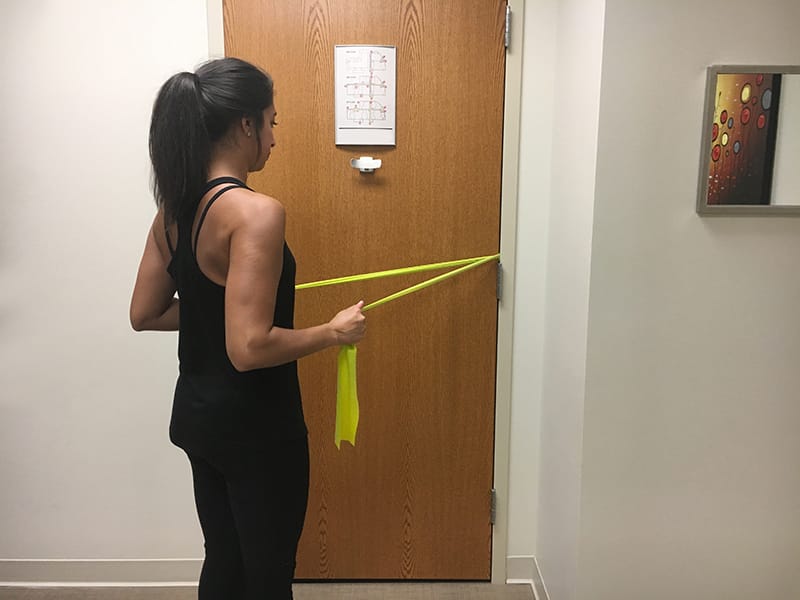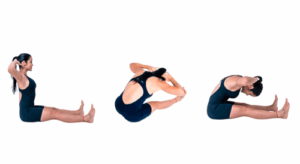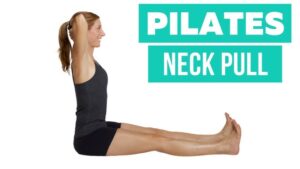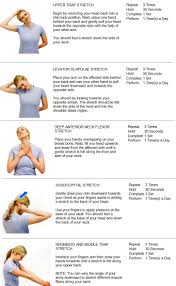

Forward neck posture, often called “text neck” or “nerd neck,” is becoming an all-too-common problem in today’s digital age.
Spending hours hunched over laptops, smartphones, or even books can lead to this condition, where the head juts forward, putting strain on the neck and shoulders.
Not only does this posture look awkward, but it can also cause pain, headaches, and even long-term musculoskeletal issues. But the good news? Pull exercises are a powerful solution.
In this article, we shall cover:
- What forward neck posture is and why it happens
- How pull exercises target and correct forward neck
- The best pull exercises to fix forward neck
- How to integrate these exercises into your routine
- FAQS on Oulls to Fix Forward Head Posture
- Scientific evidence backing pull exercises for posture correction
By the end of this, you will have a solid understanding of how to use pull exercises to fix forward neck posture and improve your overall health.
What Is Forward Neck Posture?
Forward neck posture is a condition where your head tilts forward in relation to your spine, causing a misalignment.
Normally, your ears should align with your shoulders when viewed from the side. In forward neck posture, the head slides forward, which places excessive strain on the muscles of the neck, upper back, and shoulders.
The condition often stems from prolonged periods spent looking down at devices, poor posture while sitting or standing, and even weak neck and back muscles.
You may alter pillow alignment for easing the pain but sometimes, your spine needs more help.
Symptoms of forward neck posture include:
- Chronic neck and shoulder pain
- Tension headaches
- Reduced range of motion in the neck
- Rounded shoulders
- Upper back pain
How Pull Exercises Help Correct Forward Neck?
Pull exercises primarily target the muscles in your upper back and shoulders—areas that tend to weaken and lengthen due to forward neck posture.
By strengthening these muscles, you are able to pull your head and shoulders back into proper alignment.
When your upper back muscles become stronger, they can support the weight of your head more effectively, helping to reduce the forward tilt of your neck.
Additionally, strengthening the muscles between your shoulder blades improves posture and reduces the hunched appearance caused by forward neck.
Research supports the role of strength training, particularly exercises targeting the back, in correcting posture.
A study published in the Journal of Physical Therapy Science found that exercises focusing on strengthening the scapular (shoulder blade) muscles significantly improved forward head posture in participants.
The study concluded that exercises targeting these muscles help pull the head back into a more neutral position, reducing pain and strain on the neck.
Best Pull Exercises to Fix Forward Neck
Now that we understand how pull exercises work, let us dive into the best exercises to incorporate into your routine.
Face Pulls
Face pulls are one of the best exercises for correcting forward neck posture because they specifically target the rear deltoids and upper back muscles.
These muscles are crucial for pulling the shoulders and neck into proper alignment.
How to do Face Pulls:
- Attach a rope handle to a cable machine set at chest height.
- Stand facing the machine and grab the rope with an overhand grip.
- Step back slightly and pull the rope towards your face, ensuring your elbows are high and wide.
- Focus on squeezing your shoulder blades together as you pull.
- Slowly return to the starting position.
- Perform 3 sets of 12-15 reps.
Face pulls can also be done with resistance bands if you don’t have access to a cable machine.
Reverse Flys
Reverse flys target the rhomboid muscles, which sit between your shoulder blades.
These muscles tend to weaken when you have forward neck posture, leading to rounded shoulders.
How to do Reverse Flys:
- Stand with feet shoulder-width apart, holding a pair of dumbbells.
- Bend at the waist so your chest is parallel to the ground, and let the dumbbells hang directly below your shoulders.
- With a slight bend in your elbows, raise the dumbbells out to your sides until they are at shoulder height.
- Slowly lower the weights back to the starting position.
- Perform 3 sets of 10-12 reps.
You can also perform this exercise with resistance bands if you prefer.
Seated Rows
Seated rows work the upper and mid-back muscles, essential for improving posture and pulling the shoulders and neck into proper alignment.
How to do Seated Rows:
- Sit on a rowing machine with your feet securely on the footrests.
- Grab the handle with an overhand grip, keeping your back straight.
- Pull the handle towards your torso, squeezing your shoulder blades together at the top of the movement.
- Slowly release the handle back to the starting position.
- Perform 3 sets of 10-12 reps.
This exercise can also be performed using resistance bands or a cable machine.
Bent-Over Rows
Bent-over rows are another fantastic exercise that targets the muscles of the upper back and shoulders.
How to do Bent-Over Rows:
- Stand with feet shoulder-width apart, holding a pair of dumbbells.
- Bend at the hips and lower your torso until it’s almost parallel to the floor.
- Keep your back straight and pull the dumbbells up towards your torso, squeezing your shoulder blades together.
- Lower the weights slowly to the starting position.
- Perform 3 sets of 10-12 reps.
This movement is excellent for strengthening the rhomboids, traps, and rear delts—all muscles that help with proper posture.
T-Raises
T-Raises may seem simple, but they pack a punch when it comes to targeting the muscles in the upper back and rear deltoids.
These muscles play a significant role in pulling the shoulders back, which ultimately helps correct forward neck posture.
How to do T-Raises:
- Stand with feet shoulder-width apart, holding a pair of light dumbbells.
- With a slight bend in your knees, hinge forward slightly at the waist.
- Raise the dumbbells out to the sides until your arms form a “T” shape.
- Lower the dumbbells slowly back to the starting position.
- Perform 3 sets of 12-15 reps.
These can also be done with resistance bands for a different kind of resistance.
Integrating Pull Exercises into Your Routine
Consistency is key when trying to fix forward neck posture.
Aim to incorporate these pull exercises into your strength training routine at least 2-3 times per week.
A well-rounded routine should also include core strengthening and flexibility exercises, as a strong core supports proper posture, while flexibility exercises help alleviate tension in the neck and shoulders.
Here is a sample weekly routine to get you started:
- Day 1: Face Pulls, Seated Rows, Reverse Flys
- Day 2: Core exercises (planks, bird-dogs), Stretching (cat-cow, neck stretches)
- Day 3: Bent-Over Rows, T-Raises, Seated Rows
- Day 4: Core exercises, Yoga or flexibility training
Scientific Evidence on Strengthening for Posture Correction
Pull exercises are not just about improving aesthetics—they are backed by science.
A 2018 study published in the Journal of Bodywork and Movement Therapies found that resistance training exercises focusing on the posterior chain (back muscles) led to significant improvements in posture.
Participants showed a reduction in forward neck posture and reported decreased neck and upper back pain after incorporating these exercises.
Additionally, strength training has been proven to increase bone density, improve knee and hip joint function, and enhance overall muscle balance, all of which contribute to better posture and reduced neck strain.
By consistently performing pull exercises, you are not only fixing forward neck posture but also preventing future injuries.
FAQS on Pulls to Fix Forward Head Posture
Q-1: How do pulling exercises help correct forward neck posture?
A-1: Pulling exercises strengthen the upper back and shoulder muscles, such as the rhomboids and trapezius, which counteract the forward pull of the head. By enhancing the strength and endurance of these muscles, pulling exercises help realign the head over the shoulders, reducing the strain associated with forward neck posture.
Q-2: What are some effective pulling exercises to address forward neck posture?
A-2: Effective pulling exercises include:
Rows: Using a resistance band or cable machine, pull your elbows back while keeping your shoulders down and back.
Reverse Flys: With a slight bend in the knees, hinge at the hips, and extend your arms out to the sides, squeezing your shoulder blades together.
Lat Pulldowns: Pull a bar down towards your chest, focusing on engaging the upper back muscles.
Incorporating these exercises into your routine can help strengthen the muscles responsible for maintaining proper head alignment.
Q-3: How often should pulling exercises be performed to improve forward neck posture?
A-3: To see improvements, aim to perform pulling exercises 2–3 times per week, allowing at least 48 hours of rest between sessions. This frequency provides sufficient stimulus for muscle strengthening while preventing overtraining.
Q-4: Can pulling exercises alone correct forward neck posture?
A-4: While pulling exercises are beneficial, they should be combined with other corrective strategies, such as stretching tight chest muscles and practicing mindful posture throughout the day. A comprehensive approach that includes strengthening, stretching, and ergonomic adjustments is most effective in correcting forward neck posture.
Q-5: Are there any precautions to consider when performing pulling exercises for forward neck posture?
A-5: When performing pulling exercises:
Maintain Proper Form: Ensure correct posture to prevent strain.
Avoid Overtraining: Allow adequate rest between sessions to prevent muscle fatigue.
Listen to Your Body: If you experience pain or discomfort, stop the exercise and consult a healthcare professional.
By following these precautions, you can safely incorporate pulling exercises into your routine to help correct forward neck posture.
Conclusion:
Forward neck posture can be a nuisance, but it does not have to be a lifelong problem.
By incorporating pull exercises like face pulls, lat pulldowns, reverse flys, seated rows, bent-over rows, and T-raises into your routine, you will strengthen the muscles that support your neck and shoulders, helping to pull your head back into proper alignment.
Solution:
To fix forward neck posture with pulls, consistency and the right exercises are key.
As per bestforwardheadposturefix.com, “Focus on strengthening your upper back and shoulder muscles, incorporate these exercises into your workout routine, and practice good posture throughout the day”.
As you strengthen the muscles that support your head and neck, you will not only correct the issue but also reduce pain and improve your overall well-being.
References:


